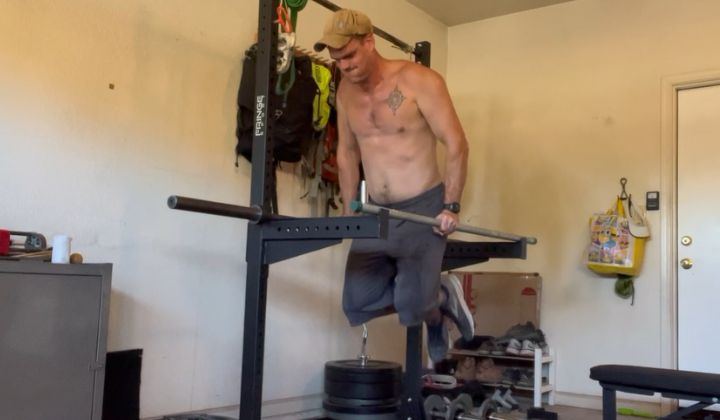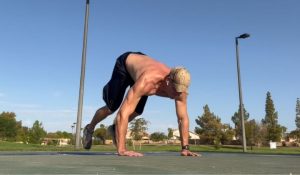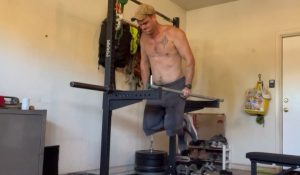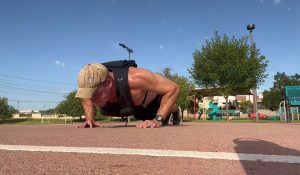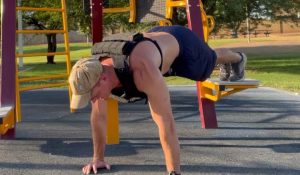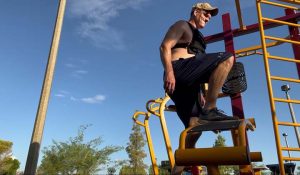I’ve not been shy in the past about the fact that I’m a big fan of dips. The benefits of dips are numerous, and I believe that if we respect this exercise the same way we treat any other compound pressing exercise, we can experience those benefits for years to come.
Dips build upper body pressing strength extremely quickly. This is because they place about 90% of the bodyweight on the triceps, pectorals, and front delts, quite a bit more than normal push-ups. They have a minimal equipment requirement, and incorporate more muscle groups than most other pressing exercises.
They are an excellent assistance exercise for bench press, or they can be used as a stand-alone exercise for the chest and triceps. In this article, we’ll focus on the bodyweight dip’s benefits, as an entire article can (and likely should) be written about the weighted variation at a later date.
Benefits of dips
1. Minimal equipment requirements
Though they require slightly more equipment than push-ups, the a dip station is relatively inexpensive and easy to improvise (if necessary).
A simple dip stand from a big box sporting goods store will suffice (and doubles as a great place to do inverted bodyweight rows).
That being said, I literally used to do them between an old laundry machine and an old dryer in my garage. That is to say, if you don’t have a place to do them, it’s not too hard to find a spot.
2. Improved mass and strength in the triceps
Dips are an excellent tricep builder. Excellent.
They are famous in the powerlifting community for building epic lock-out strength. They are famous in the bodybuilding community for creating enviable horseshoe triceps.
Part of the reason is that they can take the tricep through an extremely long range of motion. Unlike in bodyweight push-ups or weighted push-ups, dips can place a fairly extreme stretch on the triceps.
3. Improved definition and mass in the lower chest
Though it’s not “wrong”, I’ll never understand folks who insist on trying to modify the push-up to hit the lower chest. Just do dips! They’ll do a better job than any “lower chest” push-up variation you’re likely to find.
Arnold was famously a huge fan of the dip and the weighted dip for this purpose. If you’re looking to create that lower chest “line” and widen the bottom of your lower chest, then dips are a fantastic way to do it:
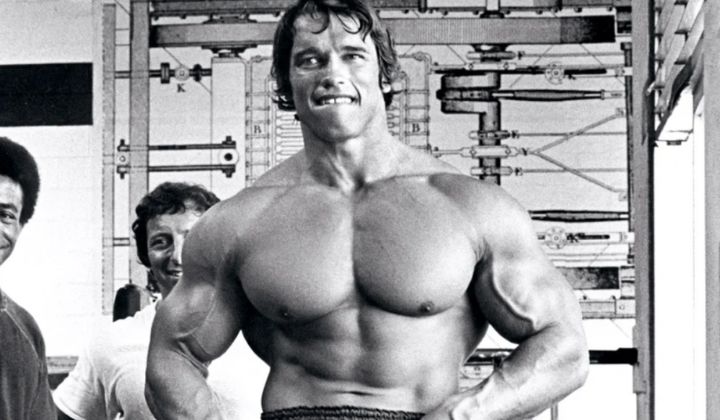
4. They incorporate the lats and serratus more than push-ups do
The downward angle of the press on a dip has a slight advantage over the push-up in that the list of muscles worked by the dip goes beyond just shoulders, triceps, and pecs:
- The serratus anterior is hammered in the dip
- The pec minor is incorporated far more than any other press
- The lats are used as stabilizers.
While dips are no substitute for doing pull-ups and chin-ups, I’ve found that some of my most explosive lat growth have come from periods of time where I was incorporating dips and pull-ups together.
5. Increased mobility in the shoulder joint
Without getting too into the weeds on “mobility” work here, I will say that if we define mobility as “the ability to move,” then dips certainly improve our shoulder joint’s mobility in the extreme extended position (pictured below):
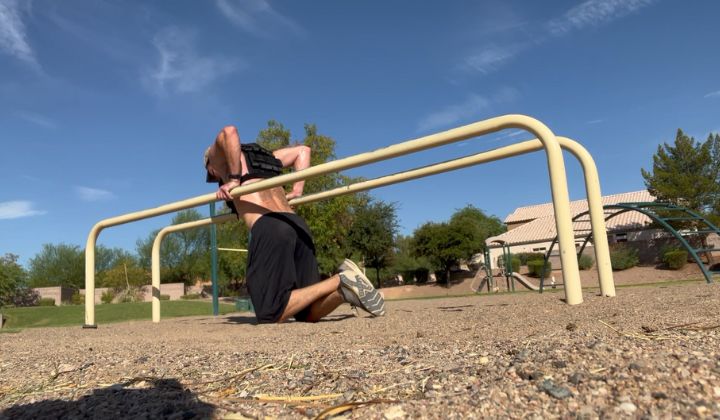
I firmly believe that folks who frequently report issues with dips hurting their shoulders are simply lacking strength in this extreme stretched position. It puts a lot of stress on the front delt and the chest. Once strength and stability are built in this position, the exercise tends to stop bothering lifters.
The benefit is that someone who does dips, therefore, has newfound mobility and resilience in the shoulder joint that wasn’t there before.
6. More resistance than a push-up
Rather than getting into a discussion over which exercise is better (I’ve got a full article on dips versus push-ups here), I’d rather just say this:
Dips are push-ups. I mean, the dip is literally a “floating” push-up. Before the exercise Nazi’s attack: yes, I understand that they aren’t the “same” exercise exactly. However, what is a bodyweight dip other than a push-up with your feet in the air, rather than on the ground?
It’s estimated that in a dip, you’re lifting around 90% of your bodyweight (body weight minus arms), whereas in a push-up, you’re lifting 55-60% of your bodyweight across a similar range of motion.
If you’re one of those individuals who can do 20-30 push-ups in one shot, no problem, then you’re likely going to have to either find a way to make your push-ups harder or switch to dips (if continuing to build muscle and strength is your goal).
7. Dips are the perfect super set for pull-ups and chin-ups
These two exercises might as well have been made for one another – so much so that we wrote an entire article on minimalist methods of combining dips and pull-ups into an upper body super set.
In fact, someone in possession of a simple dip belt could build an impressive physique using just these two. They are some of the most time-tested and effective exercises.
A basic plan to incorporate dips into your workout routine
If you’re anything like me, then the simplicity of this basic and brutal bodyweight exercise is appealing to you. If you’re looking to incorporate this exercise into your routine, here are a couple of guidelines to keep you pain-free and building strength as you go:
- Start by doing 2-3 sets of bodyweight dips, once per week
- Stay far away from muscular failure in the beginning (4-5 reps in reserve (RIR), no grinder or “slow” reps)
- After a few weeks, experiment with adding a second day of dipping
- After a few more weeks, start going closer to failure (say, 1-2 RIR) for a more traditional muscle-building stimulus
If you’ve made it through that initial phase and you haven’t pissed off your shoulders, you’re likely good to go. I do recommend increasing weight and repetitions slowly, just like you would on a bench press or any other heavy compound pressing exercise.
You’ll be enjoying the dip exercise’s benefits in no time!
Happy dipping!
